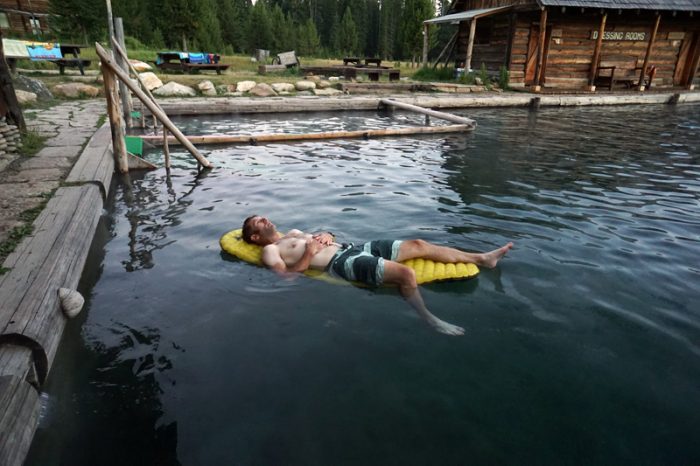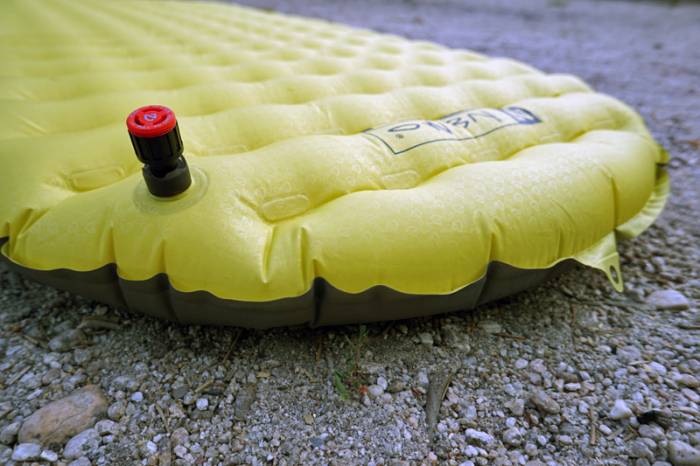Lightweight fabrics baffled together with low-stretch panels help NEMO’s new Tensor sleeping pads support a more stable night’s sleep.

Spend enough nights out under the stars and you’ll quickly be able to poke holes in the marketing strategy behind any sleeping pad. Self-inflating, R-value, stabilization … the good and the bad, and ultimately the truth, will always reveal itself after an honest night’s sleep.
This summer we got our hands on NEMO’s Tensor 20R sleeping pad and ran it through a wringer of test scenarios. We hauled it along on family camping trips, carried it in our bike packing kit, threw it down on fire tower hardwood floors, and caught a few winks on a hotel floor between trade shows.
And just when we thought we were done, we unfurled it in the basement and unleashed a troop of neighborhood kids on it.
The Tensor is a tough little pad that delivers big on durability and comfort.
Tested: NEMO Tensor 20R Sleeping Pad
Who’s it for: Space- and weight-conscious outdoor enthusiasts who still prize a good night’s sleep in moderate temperatures.
Included: Pad, stuff sack, Velcro strap, repair kit.
Made in: China.
NEMO Tensor 20R
- Weight: 13.5 oz.
- Minimum temperature rating: 30-40˚F
- Width: 20 in.
- Length: 72 in.
- Thickness: 3 in.
- Insulation: Aluminized film
- Packed size: 8 in. x 3 in.
- Fabric: 20D Polyester
- Price: $120
- More info/company contact
No-Stretch Baffles?
According to NEMO:
“The non-stretch coated fabric (used in the baffles) …provides a stable sleep surface that can’t be matched. Angled baffles, found in other pads, will straighten-out as the pad is loaded; stretch baffle will deform; both cause other pads to feel squishy. The Tensor has the best-in-class point-deflection-resistance, which means that your elbows and other joints can’t press through the pad. Also, when you roll toward the edge of the pad it better supports your weight”.
NEMO Tensor Inflation, Insulation
Nemo Tensor Size, Weight
Pros and Cons
Pros: At 3″ x 8″, the Tensor is super packable–perhaps the most compact full-length, 3-inch-thick pad we have tested. This puts it in direct competition with Cascade Design’s NeoAir X-Lite. The Tensor takes the edge, though, losing a svelte inch off both the packed height and width and still yielding an extra 1/2 loft over the NeoAir.
At $120, the Tensor is a competitively priced pad.
The low elasticity of the baffles allows you to dial in the pad’s firmness without compromising a good night’s sleep.
Cons: The Tensor 20 pad is fairly narrow and my arms occasionally fell off. If you have broad shoulders, or like a little extra room, consider the Tensor 25R. Though this is not exclusive to the Tensor or NEMO, as most brands’ pads have this standard size.
The pad lacks a quick air-release valve found on many of the latest pads on the market. This requires you “roll the air out” of the pad the old-fashioned way. The valve position gets in the way of rolling up the pad.

Minor points: While the 20D fabric is quieter than most pad material, the metallic film found on the inside sounds a little crinkly.
NEMO Tensor 20: Review
NEMO’s claims hold true; The Tensor did a good job supporting the body in the middle of the night. I didn’t notice any underlying objects protruding into my back.
Should you ditch the old pad? For those who already have a good light pad, I don’t think it warrants plunking down $120 to change. But if you are in the market for a new pad, the Tensor line should certainly be considered, especially for the ultralight adventurer looking for a good night’s sleep.












